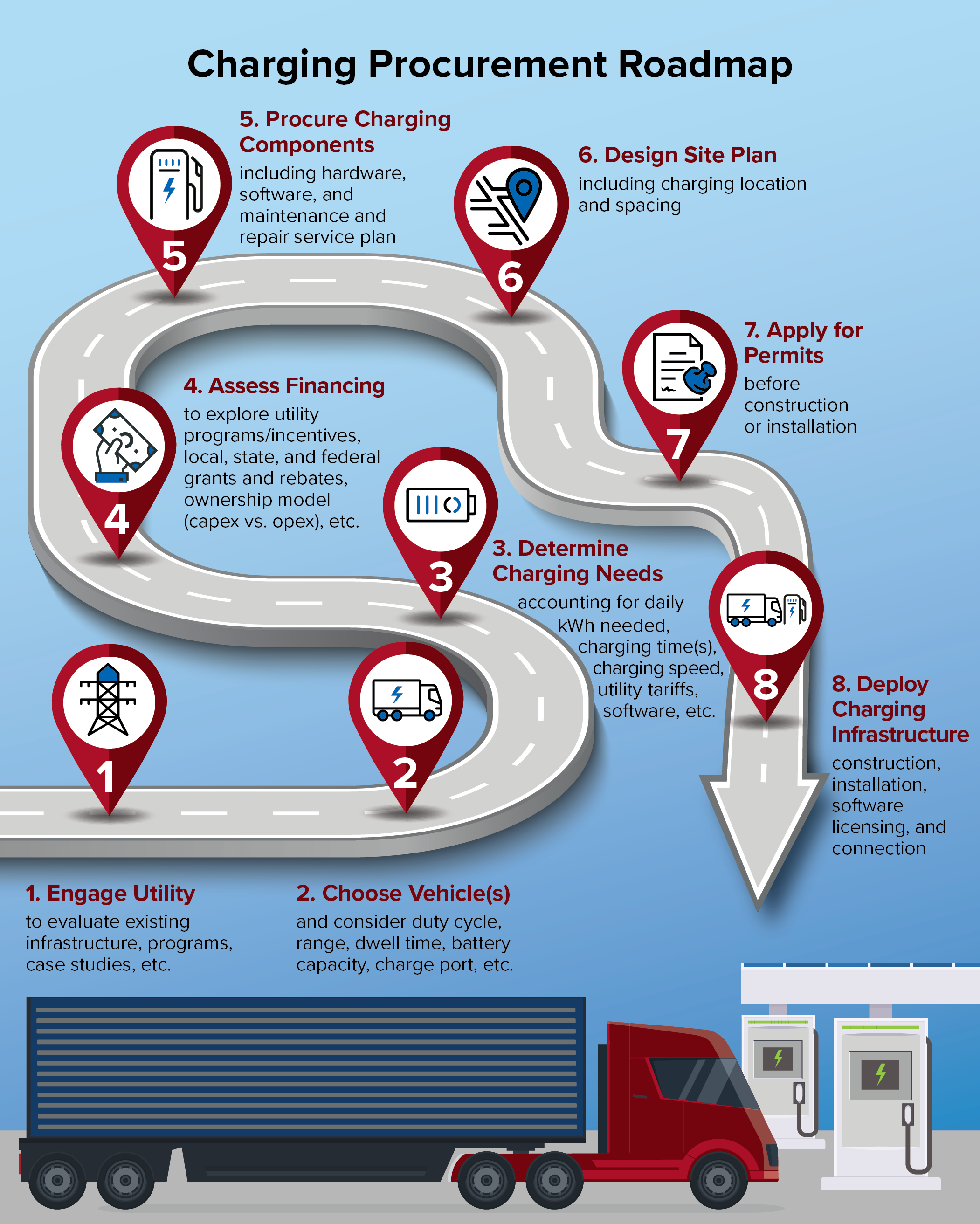How Is Electrical Engineering Used In The Design Of Electric Vehicle Charging Infrastructure?
Electric vehicles, particularly electric trucks, have become increasingly popular in recent years. Due to the growing popularity of these vehicles, many businesses and governments are looking to invest in charging infrastructure to support their use. In this post, we will explore the different types of charging infrastructure available for electric trucks, as well as the procurement process for obtaining this infrastructure. There are three main types of charging infrastructure for electric trucks: Level 1, Level 2, and DC fast charging. Level 1 charging typically uses a standard household outlet and provides a slow charge, generally requiring 12-24 hours for a full charge. Level 2 charging uses a 240-volt outlet and provides a faster charge, generally requiring 4-8 hours for a full charge. DC fast charging, or Level 3 charging, uses a specialized charging station and provides the fastest charge, generally requiring 20-60 minutes for an 80% charge. When considering which type of charging infrastructure to install, it is important to consider the needs of the fleet. A Level 1 charger may be sufficient for vehicles that have a low daily mileage and ample time for charging, while a Level 2 charger may be necessary for vehicles that require a faster turnaround time. DC fast charging may be necessary for vehicles that require a quick turnaround time and have a high daily mileage. To procure charging infrastructure for electric trucks, there are a few steps that must be taken. First, it is important to conduct a needs assessment to determine the type and quantity of charging infrastructure needed. This will involve analyzing the current fleet and determining the future needs of the organization. Once the needs assessment is completed, a request for proposals (RFP) can be issued to potential suppliers. The RFP should include details about the type and quantity of charging infrastructure needed, as well as any technical specifications necessary. It should also outline the procurement process, including the timeline and budget. Potential suppliers will then submit proposals outlining their plans for meeting the organization's needs, and the organization can select the supplier that best meets their requirements. In addition to procuring charging infrastructure, it is also important to consider the maintenance and upkeep of the infrastructure. This may involve hiring a third-party contractor to handle repairs and maintenance, or it may involve training in-house maintenance staff on the necessary skills. Another important consideration when installing charging infrastructure is the location. Charging stations should be installed in easily accessible locations that are convenient for drivers. They should also be located in areas where they are unlikely to be obstructed by other parked vehicles or obstacles. In addition to the benefits of installing charging infrastructure for electric trucks, there are also potential challenges that must be considered. One of the biggest challenges is the cost of installation. Depending on the type and quantity of infrastructure needed, installations costs can be significant. These costs may be partially offset by government incentives and tax credits, but businesses and organizations will still need to allocate significant resources to cover the cost of installation. Another challenge is the limited range of electric trucks, particularly for vehicles that have a high daily mileage. This may require businesses and organizations to invest in additional vehicles or implement charging stations at multiple locations to ensure that the fleet can operate effectively. Despite these challenges, the benefits of installing charging infrastructure for electric trucks are significant. In addition to reducing emissions and promoting sustainability, electric trucks can also save businesses and organizations money on fuel costs over time. By carefully considering the needs of the fleet and implementing the appropriate charging infrastructure, businesses and organizations can support the transition to electric trucks and help create a more sustainable future. In conclusion, electric trucks and charging infrastructure are becoming increasingly popular and necessary for businesses and governments alike. With the growing demand for these vehicles, it is important to carefully consider the type of charging infrastructure needed and to follow a structured procurement process to obtain this infrastructure. By investing in charging infrastructure for electric trucks, businesses and organizations can support a more sustainable future while also potentially saving money on fuel costs over time. 

nacfe.org - charging electric infrastructure truck challenges trucks vehicles roadmap commercial plan private amping financing report present unique fit size cleantechnica
Post a Comment for "How Is Electrical Engineering Used In The Design Of Electric Vehicle Charging Infrastructure?"